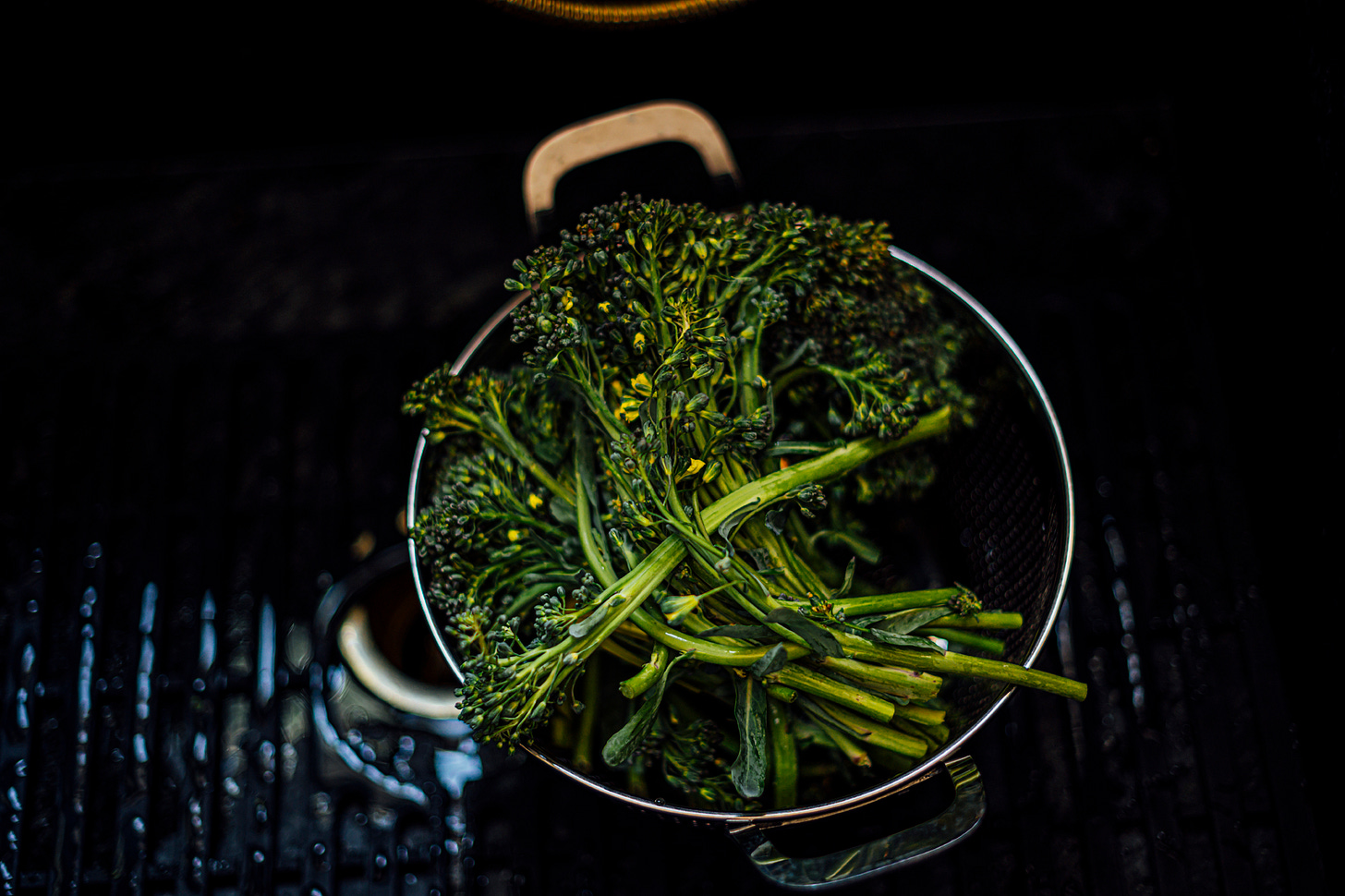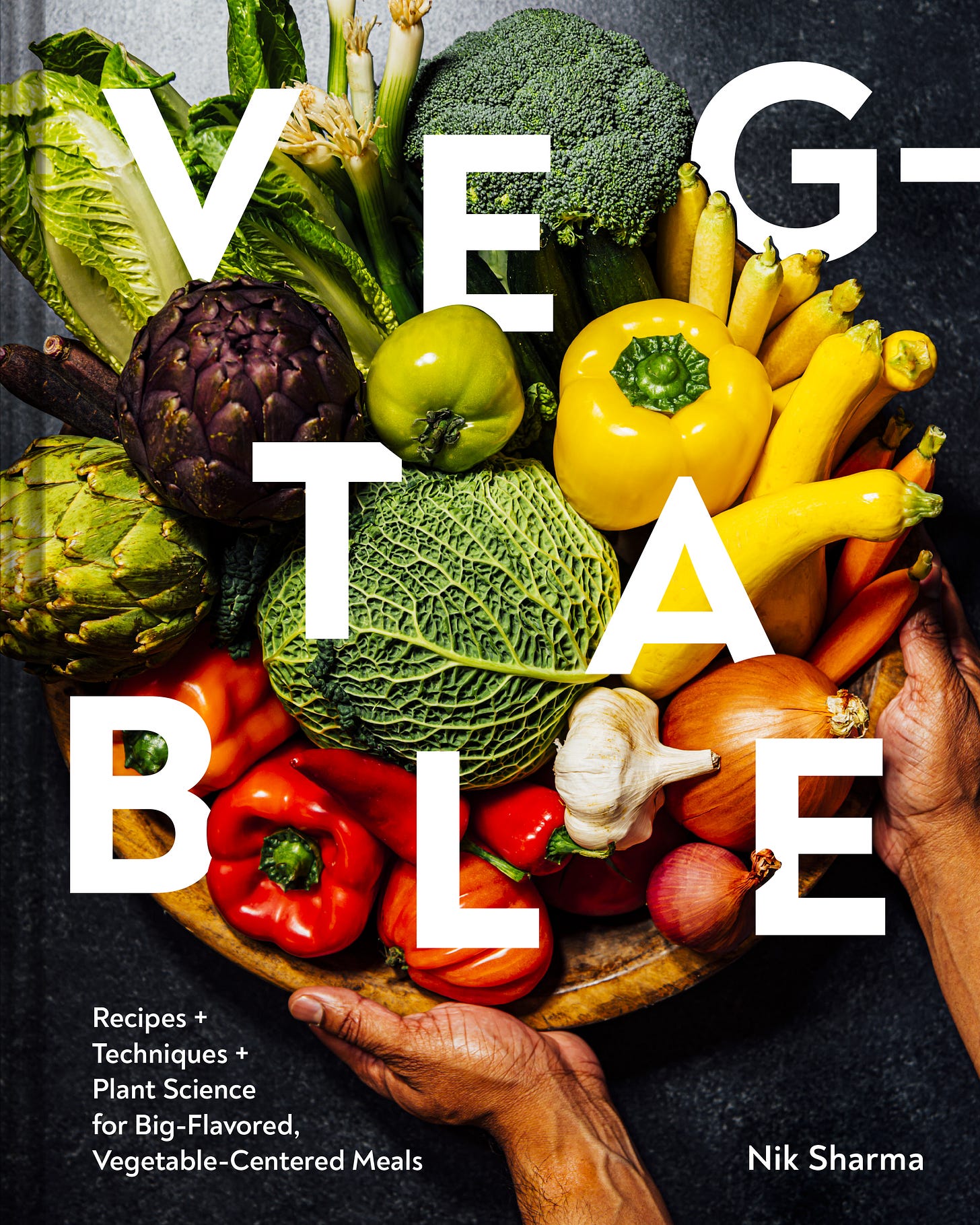Is Broccolini a Real Vegetable?
The "Asparational" Story Behind Broccolini
I’m being a little playful; honestly, anything can be a vegetable. We eat fruits like tomatoes and eggplant and call them vegetables. Flowers, roots, stems, leaves, etc., can all be vegetables. From a botanist’s view, there is no such thing as a vegetable; that’s a cook's point of view. The definition of a vegetable is much looser; I think of it as any plant or plant part that is cooked in a savory fashion.
When I set out to write Veg-Table, I realized I needed to learn and understand where our vegetables come from before developing my recipes. Without context, an ingredient or recipe can be a soulless creature, an aimless and haphazard ship sailing without direction in a vast ocean. My recipes and cookbook needed a compass to guide them, and that compass would be a hybrid of biology and flavor.
I drafted a rough index and sorted the chapters by the different families within the plant kingdom. This also meant no algae or fungi, as these are technically separate biological entities from plants (you’ll still see some members used as ingredients throughout the book). Once the plant families were jotted down, I could pick the vegetables I wanted to focus on. Now, while the book focuses on vegetables that most of us commonly cook with, like cabbages and potatoes, I also wanted to include vegetables that I was less familiar with, like cactus and cassava; after all, this is a book about vegetables and the plant kingdom. I also learned much about vegetables I cooked plenty with, like bamboo and broccolini. Today we’re taking a deeper look at this remarkable floret that’s captivated many hearts across the world.

What in the World is a Broccolini?
The first fact that threw me off, considering how often the word is used, is that “broccolini” is registered - so it should be “Broccolini®”. But most of us don’t do this, which is a testament to how prevalent this plant has become in our kitchens. This made me realize that there must be an interesting story behind this plant. I did a little digging, and here’s what I learned.
Broccolini is a recent addition to the plant kingdom and was developed in the labs of the Sakata Seed Corporation in Japan. Early in the 1980s, the Sakata company wanted to expand its share of broccoli in the global market and invested in research to develop a more resilient variety that could grow in tougher hot climates. By using the method of hand pollination (and not genetic engineering), researchers were able to develop a hybrid of broccoli and gai lan (Chinese broccoli/kale) that they initially called “Asparation” …. a name that has no direct connection to asparagus but rather referred to the slender stalks of the vegetable that resembled asparagus. Asparation (I kept thinking of aspirating needles when I read this word) still needed work. The plant also goes by Asparabroc, tender stem broccoli, and baby broccoli. The plant was very sensitive to sudden changes in weather, grew longer, and needed more resources like water. Over the next several years, additional trials, research, and some smart marketing, “Asparation” changed to “Broccolini®”. The new vegetable was introduced to chefs and quickly became a favorite among chefs at the Culinary Institute of America. Their seal of approval helped generate more fans across the food world, and the vegetable quickly grew in its popularity. People fell in love with the vegetable due to its tender texture and sweeter taste.
The short answer to my question in the caption is yes; broccolini is a vegetable - we eat the florets and the thin long stalks.
Some Broccolini Kitchen Tips
In the kitchen, I treat broccolini just like its parent, broccoli, and honestly, I substitute them for each other in recipes. Veg-Table has an excellent lemony broccoli miso pasta recipe where broccolini can be used in place of broccoli. Blistering, charring, stir-frying, and roasting make broccolini taste better. If the flower buds are already open, the stems tend to be tougher even after cooking, so I try to avoid picking those when I buy broccolini. I keep broccolini in the refrigerator, away from fruits like apples and peppers. The ethylene gas (ethylene is a hormone produced by plants that triggers aging.) produced by these fruits hastens the broccolini florets to open up and turn yellow. One more tip, I trim and discard any tough ends from the stalks before cooking.
Cook with Broccolini
This week, I’ve got a new broccolini recipe for you to make. The broccolini is charred and tossed with burst tomatoes, fava beans, sherry vinegar, coriander, and fennel. You’ll need thick slices of buttered toast to enjoy the sauce from the pan.
By the way, I’m still trying to get over that Broccolini was once called Asparation. I’m grateful for good marketing people; imagine saying, “Can I get a bunch of Asparation, please?” or “Can I order the roasted Asparation, please?”.
Sources Consulted:
Livingston, Thomas. “Broccolini®: What’s in a Name?” Gastronomica 10, no. 3 (2010): 89–92. https://doi.org/10.1525/gfc.2010.10.3.89.





Recipe looks great. Do you recommend fennel seed or ground fennel or either?
“Bropagus” has a nice ring to it. 🙃